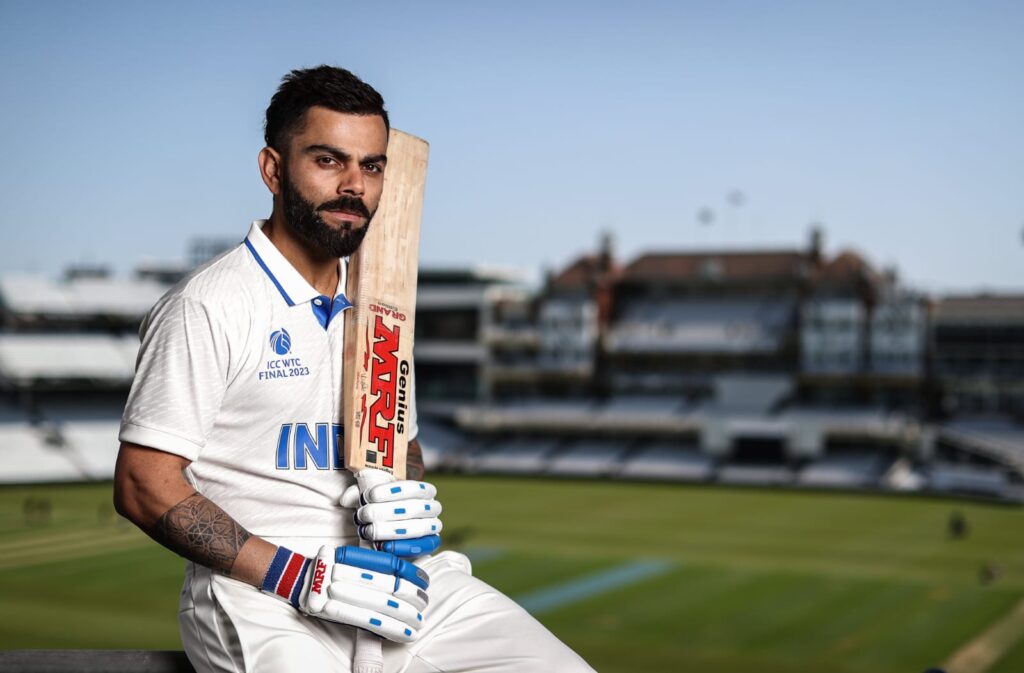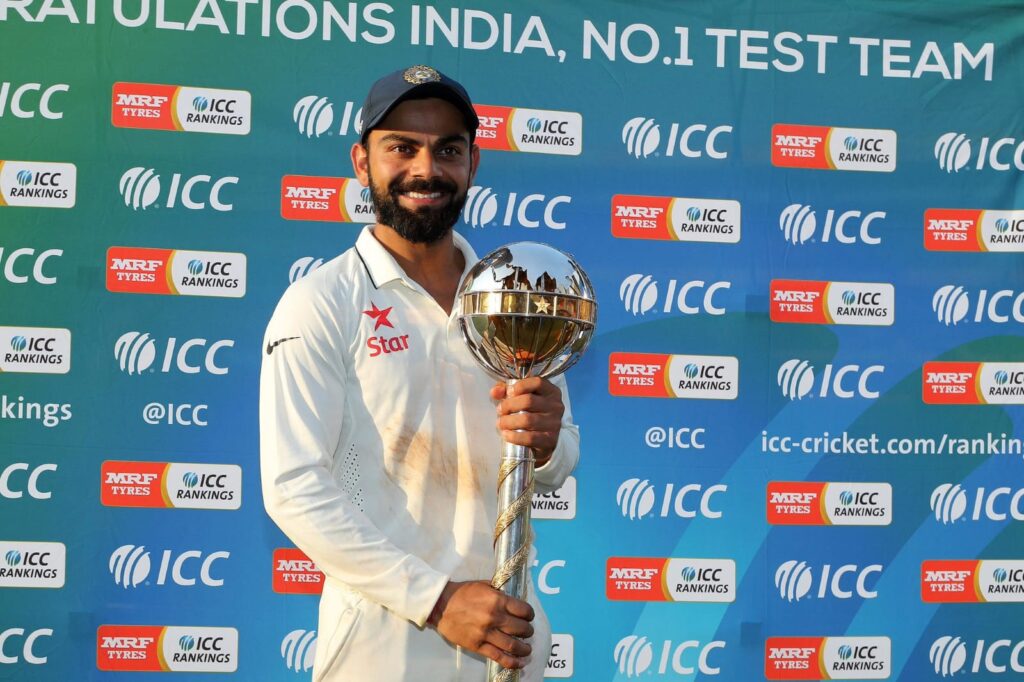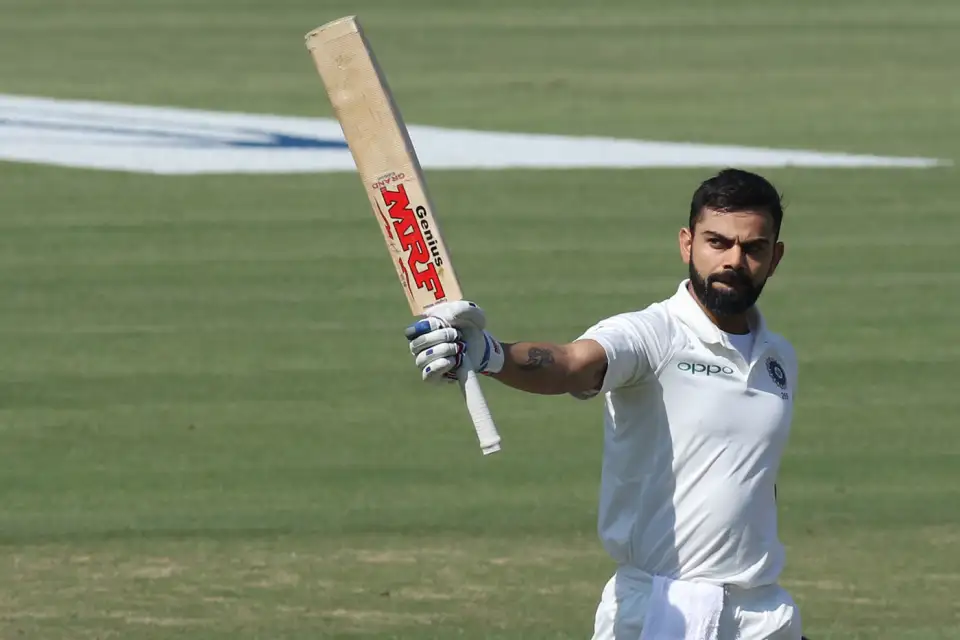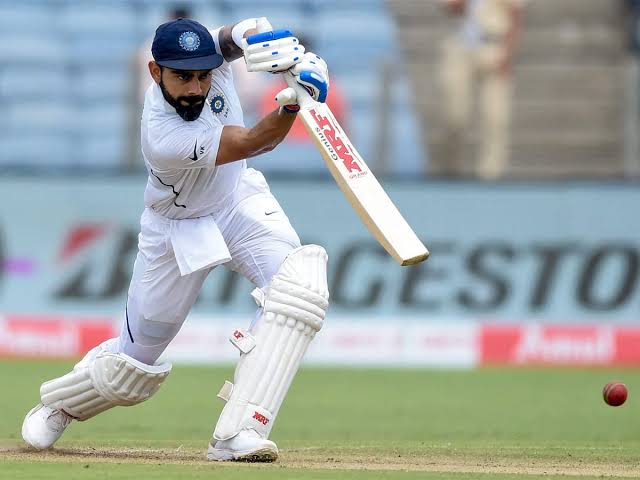
Sudden. Abrupt. Understandable. Yet Incomplete.
These were my mixed emotions upon seeing Virat Kohli’s Test retirement announcement via his Instagram post.
It is hard to comprehend and process the decision, as one hoped that one would be blessed to witness yet another resurgent phase in his Test career, especially given the purple patch that he is enjoying in the ongoing IPL season.
One wished that after the lacklustre Border-Gavaskar Trophy, the England series could be the beginning of his resurgence, and one could perhaps see the magic of 2018 rekindled once again. Or perhaps a final swansong for the greatest ambassador of modern Test cricket at the hallowed grounds of Lord’s or The Oval?
But just as Kohli would dictate the game on the field and play on his terms, he decided to bow out respectfully from his favourite format just when he thought it was right and announced it directly to his fans.
His legendary career spanned 14 years, from when Facebook was the most preferred social media app to when Instagram peaked in popularity.
That’s one way to define a generation, and Kohli’s sheer presence, approach, and performances have ensured that the relevance, excitement, and love for red-ball cricket continue to thrive across this generation’s bookends.

Three clear phases as a batter
As a Test batsman, his journey can be best analysed in three distinct phases, where he settled and gained momentum in international cricket between 2011 and 2015; achieved exemplary peak human performance between 2016 and 2019 and one that coincided with groundbreaking captaincy; and the final five years post pandemic where the magic began to gradually fade out a little.
In his first five years, Kohli amassed 2,994 runs across 41 matches at an average of 44.02. He bagged 12 half-centuries and 11 tons, eight of which were scored overseas.
After he felt that he belonged at this level by the end of 2012, one started seeing glimpses of his eventual greatness in the next two years, where he averaged 56 and 44.57, respectively.
His 119 and 96 at Johannesburg in 2013 nearly helped India start the series against South Africa on a winning note, before some rearguard defence from AB de Villiers and Faf du Plessis secured a draw for the hosts. Kohli’s ability to negotiate the pace and seam of Dale Steyn, Morne Morkel and Vernon Philander caught the attention of greats.
His very next ton was a Valentine’s Day gift for one and all at Wellington, when Kohli brought out some aggressive stroke-play in his 105 off 135 deliveries, whilst helping India negotiate a draw, after the visitors were beaten blue by a mesmerising triple-ton by Brendon McCullum and centuries from Brian Watling and Jimmy Neesham.
His two back-to-back centuries in Adelaide in December 2014 were perhaps the best knocks one saw in this first phase; if the 115 in the first innings was classically delightful, the 141 at a strike rate of 80 was bold and heart-stopping.
India were set 364 to win on the final day, a target most skippers wouldn’t dare chase in the fourth innings, especially on a turner in Adelaide, where the genius in Nathan Lyon was turning it square. But the stand-in skipper had different ideas as there was no “draw” in his dictionary. India were 57/2 when he stepped into bat, and the legend nearly saw us home that evening, before holing out at mid-wicket, when India was just 60 away from what would have been a heroic win.
After two consecutive defeats, at Adelaide and Brisbane, Kohli’s 169 and 54 at the MCG were much-needed balm for us Indian fans, helping soothe some pain from the prior games; his courageous and scintillating shots against a lethal Mitchell Johnson were an absolute treat to watch.
Incidentally, nine of the 11 centuries in the 2011-2015 phase didn’t result in a team win, and the two that did were played in home conditions, a habit that Kohli would go on to transform with a completely different playbook in his next phase.
Kohli created havoc in the next four years, between 2016 to 2019, across all formats and I dare say one of the best phases of Indian Test cricket that I have witnessed in the three decades of my following.
Kohli demonstrated his superhuman powers, both as one of the most complete batters the world has ever witnessed and as a captain who taught India to compete, be aggressive, and fight tooth and nail, especially in the tough SENA conditions.

Fitness sensation and icon
This is the phase when he transformed himself into a fitness sensation and a style icon, one that inspired not only his fellow teammates but an entire generation to follow suit.
His mindset and approach helped rebrand Test cricket into something attractive, competitive, entertaining, cool, relevant, and worth following for a generation that was consuming the T20 format from the fire hose and this is something that red-ball cricket should forever be grateful for to an icon like Kohli.
He piled 4,208 runs in 43 Tests during this four-year period at an astonishing average of 66.79. He smashed 10 half-centuries, 16 tons, seven of which were double tons.
He holds the record for scoring the most double tons by an Indian and the highest by any batter in Tests since his debut. The first six came in just 34 innings, at a pace that was just second to that of the all-time great Donald Bradman.
Numbers don’t lie
He is also the only player in history to score over 1,000 runs in consecutive seasons at an average of 75 or more. He ended 2016 with 1,215 runs at 75.93; 2017 with 1,059 at 75.64, and in 2018, he scored 1,322 runs at an average of 55.08
A golden three-year period in his life that helped him win the ICC Test Cricketer of the Year in 2018, and he also attained ‘numero uno’ position in ICC batting rankings across all three formats.
During his time span, he was the best of the ‘Fab Four’ in Tests, scoring more than Steve Smith and Kane Williamson, whilst Joe Root was going through a relatively lean patch.
Out of these four legendary batters, he ranks at the top of the all-time list of the most runs scored by players in a streak of 50 successive innings.

First hundred in England
He scored his first ton in England at Edgbaston, where he swallowed his pride and respected James Anderson, his arch-nemesis, by not scoring off the 41 of the 43 deliveries that he faced from him. Once set, he brought out his best shots from the book, scored a glorious 149 in the first innings, and followed it up with a half-century in the next.
Even though that wasn’t enough to win the match, it boosted his confidence, given the nightmarish tour of 2014. It also helped him usurp Smith as the No. 1 Test batter in the ICC rankings, the first for an Indian since Sachin Tendulkar in 2011.
Two other priceless centuries from Kohli didn’t come in a winning cause, like the one at Edgbaston, but they gave a clear view of his grit, technique, flair, and fighting spirit.
When Kohli batted at the Centurion in January 2018 for 379 minutes to score a masterful 153, everything seemed possible. Against the fierce and seaming Proteas attack, India’s next highest score was just 46, which showed the different stratosphere that Kohli existed in.
Likewise, later that year, on a bouncy Perth pitch where everyone was struggling to put bat to ball, Kohli displayed his tenacity and patience and stitched meaningful partnerships with Cheteshwar Pujara and Ajinkya Rahane. He went on to score a brilliant 123 against the relentless and accurate battery of pacers that included Mitch Starc, Josh Hazelwood, and Pat Cummins.
One who loved challenges
Kohli thoroughly enjoyed the challenge of scoring where it’s the hardest. Whilst his average at home was over 55, a good 14 runs higher than his away performance, he has enjoyed some stellar performances in Australia, England and South Africa.
His 692 runs in the 2014-15 series in Australia are the second-best by an Indian on an overseas tour after Sunil Gavaskar’s 774 in his debut series in the West Indies in 1970-71.
Kohli has had a terrific run in South Africa as well, wherein he has scored a total of 891 runs at an average of nearly 50, whilst the other Indians in those four series managed to score at an average of just 18.3
His 583 runs in the summer of 2018 in England are the second-highest by an Indian in a series in England, after Rahul Dravid’s 602 in 2002.
In fact, Kohli and Dravid are the only two visiting batters to score more than 500 runs at an average above 50 in a series in both Australia and England.
Whilst these three tons may have come in vain, overall, during this four-year golden patch, 11 out of his 16 tons, helped Team India win; out of which three were in away games — one in the West Indies (2016), one in Sri Lanka (2017) and one in England (2018).
During this period, Kohli took over the reins of the Indian Test side from MS Dhoni, who had a decent win percentage of 45, about two points higher than Sourav Ganguly’s result sheet, although overseas wins eluded him.
Even when he was thousands of miles away from the team during the historic #GabbaTest in January 2021, #ViratKohli had complete faith that India would be rewarded for the hard yards that had been put in playing Test cricket.@BoriaMajumdar writes.https://t.co/blwYUStTwE
— RevSportz Global (@RevSportzGlobal) May 14, 2025
Impact on Indian cricket
This is where Kohli made the biggest impact on Indian cricket. He led from the front with his bat, words, mind, gestures, body language, and more.
He wanted to play to win; to put up a brave fight, and didn’t mind going down trying. He wanted to compete hard, never give an inch, and never take a sledge without reciprocating.
A famous quote that has come to define his captaincy stint sums up his attitude and mindset well: “For 60 overs, they should feel hell out there.” This was especially true when we played away from home in hostile conditions.
Coach Ravi Shastri taught us to play hard and represent the nation with pride. He instilled belief in the youngsters he groomed, and he inculcated a culture of high performance that delivered results.
He nurtured a bowling attack in Mohammed Shami, Ishant Sharma, Mohammed Siraj, Ravichandran Ashwin, Ravindra Jadeja, and Jasprit Bumrah that consistently snapped 20 wickets every match, which was unfathomable for India in yesteryears!
He thoroughly backed his pacers, and under his captaincy, India’s fast bowlers collectively snatched 591 wickets at an average of 26 and struck every 51 deliveries. This strike rate is second only to Sir Vivian Richards’ lethal pace attack of the 80s!
This penetrative bowling attack and a fitter fielding unit were Kohli’s success mantra, especially when we travelled overseas.
After beating Sri Lanka and the West Indies in away series, under Kohli, India finally won its first away Border Gavaskar Trophy in 2018-19. We beat the Australians and the West Indians once again in their backyard before drawing the series in England in 2021-22, which could have easily swung our way.
Great record as captain
Under Kohli’s astute leadership, India won 40 out of the 68 matches, with a near 59% win percentage, the best by an Indian Test captain. Only Steve Waugh, Ricky Ponting, and Graeme Smith have registered more Test wins as a captain.
Kohli made winning a habit for India, and during his captaincy, India remained unbeaten at home for a total of 11 series. Under his stewardship, the team ascended to the No 1 spot on the ICC Test team rankings and held that spot for five straight years between 2016 and 2021.
He also led us to the first-ever ICC World Test Championship finals in 2021!
This phenomenal captaincy record, which saw a loss ratio of only 25%, was possible only because the responsibility of captaincy brought out the best in him as a batter. He averaged 54.8 as a Test skipper and scored 5,864 runs. In comparison, his batting average was nearly 17 points lower when he didn’t lead the unit.
Only Smith of South Africa has scored more centuries as a captain, 25 in total, than Kohli’s 20, when he led India.
As a skipper, he contributed 16.45% of the team’s total tally, second only to Joe Root’s 16.68%.
Captain or not, always a team man
Clearly, Kohli was built and meant to lead, and the moment that opportunity was abruptly and unceremoniously snatched away from him in early 2022, one could see a visible shift in gears in his batting prowess.
He forever remained a team man, roaring and pumping for every big and small occasion, encouraging and celebrating when the occasion arose, offering suggestions to the captain, or guiding youngsters when needed. However, despite his physical fitness, his hand-eye-feet coordination seemed to give way.
He began playing away from the body and was edging the pace bowlers more often than not; spinners penetrated his defence, which was previously rare.
Was it mental fatigue, or was it the load of balancing three formats, or were there other life distractions, or did he simply miss the challenge of being held accountable as the leader of the pack?
In the last five years, one must grudgingly admit that his batting was a shadow of his peak period, with occasional brilliance.
You’d rather look for an erase button to forget his slump, but remember instead how he wore his heart on his sleeve. The shirt numbered 18 will bask in its glory long after Kohli bid adieu to Test cricket.
✍️@Fancricket12 https://t.co/TsWhPmDgV1— RevSportz Global (@RevSportzGlobal) May 13, 2025
The dip since 2020
Since 2020, he has only averaged 30.72 across the 39 matches that he has played. He managed to score nine fifties, convert only three tons, and go without scoring one for three consecutive years between 2020 and 2022!
While two of them were scored in drawn matches, his 30th and final ton contributed to a large and meaningful win at Perth in Australia late last year, one of his favourite hunting grounds.
During this below-par phase since 2020, Kohli’s career average eventually stooped below 47, while the other three members of the Fab-Four gang have scored at a rapid clip, especially with Williamson averaging over 64, Root over 54, and Smith doing so above 46.
Given this backdrop, Kohli’s decision to hang up his boots was imminent and understandable, yet something feels amiss and incomplete.
Maybe our expectations convinced us that he would end his career as India’s most prolific Test batter and surpass Sachin’s 51 Test centuries?
I must admit that it pains to realise that Kohli is bowing out without joining the 10,000-run club in Tests and only as the fourth highest run-scorer for India in Tests.
Somewhere deep down, one pined and hoped that we would be blessed to witness a second coming in Kohli’s twilight, that was beginning to take shape in 2023, when he averaged nearly 56?
With Rohit Sharma retiring, could he have been asked to lead in the interim against England, West Indies, and South Africa in 2025, while the management groomed the eventual next captain?
Or is it the fear amongst us fans that the void in the No. 4 spot is too big to fill, something Kohli was ready for when a Sachin decided to retire?
Or is it our collective insecurity that with Kohli gone, yet another era would end, and yet another generation would have grown up?
It may be sudden, abrupt, understandable, yet feel incomplete, but Kohli’s decision must be respected and accepted with grace.
EXCLUSIVE
Less than six months after @ashwinravi99 brought the curtain down on his Test career, @imVkohli has followed suit. Ashwin assesses his teammate’s career, and talks of how ‘the Test fuel’ and ‘energy’ will be missed.@BoriaMajumdar✍️#ViratKohlihttps://t.co/wWzyhx7PjM— RevSportz Global (@RevSportzGlobal) May 13, 2025
Fortunate as fans to have seen them
As we digest this, we need to realise how fortunate we have been to see him lead and carry forward India’s batting legacy after Sachin, Dravid and VVS Laxman; more importantly, how privileged we have been to see him take India’s captaincy to a completely level beyond what was handed over to him by Ganguly and Dhoni.
He has taught us to be fiercely competitive, to strut with confidence, to win at a global level, and to celebrate and rejoice.
Most importantly, he has made India believe and has inspired a generation or two to strive hard to transform one into the best version of themselves!
Thank you, King Kohli, for leaving a ‘Virat’ legacy!



